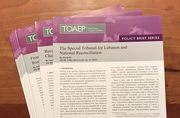Table of contents:
Element:
In the Stakić case:
"[T]he Trial Chamber finds that both a dolus directus and a dolus eventualis are sufficient to establish the crime of murder under Article 3. [...] The technical definition of dolus eventualis is the following: if the actor engages in life-endangering behaviour, his killing becomes intentional if he 'reconciles himself' or 'makes peace' with the likelihood of death. Thus, if the killing is committed with 'manifest indifference to the value of human life', even conduct of minimal risk can qualify as intentional homicide. [...] The Trial Chamber emphasises that the concept of dolus eventualis does not include a standard of negligence or gross negligence."[1]
Footnotes:
[1] ICTY, Prosecutor v. Stakić, "Judgement", IT-97-24-T, 31 July 2003, para. 587.







